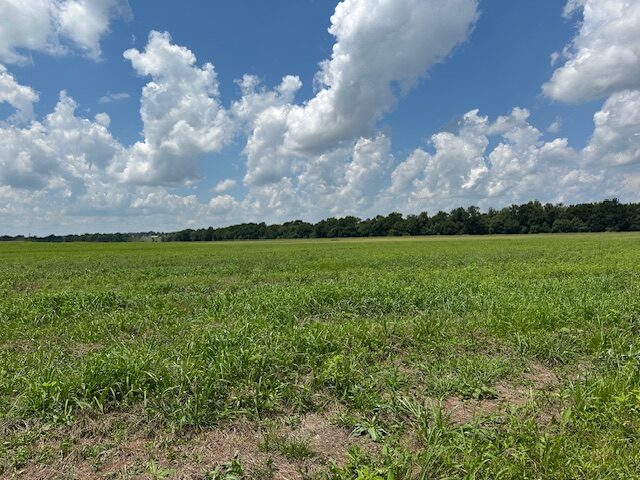With wet conditions during the planting season across southern IL and beyond, prevented planting (PP) is in play for many farm operations in 2025. While insurance options are available to provide some compensation for PP acres, other considerations for managing those acres during the remainder of the growing season should not be overlooked. In addition to weed control, minimizing soil erosion and maintaining or improving soil quality can help ensure the impacted PP fields are ready for the next crop, whether planted in the fall or next spring.
Where weed control is concerned, tillage or herbicide application are often the first options to be considered. Tillage can control existing weeds; however, it is short-term at this time of year, as additional weed flushes can be expected and will require additional attention. Each action also involves a cost.
Herbicides can also provide good control of existing weeds. However, the options for in-crop residual control are not suited to maintaining prolonged, weed free bare ground conditions in the absence of crop canopy. That, too, is not an adequate solution for PP fields.
The cost of weed control in PP fields has multiple issues. First, the direct costs of tillage or herbicide and the number of passes required to maintain control for the remainder of the growing season. Second, and probably more important, are the non-cash costs: increased erosion, degradation of soil structure, which influences the long-term water infiltration and water holding capacity of the soil, and the potential of fallow syndrome.
Fallow syndrome refers to a phosphorus deficiency that can appear in crops after bare-soil fallow periods. It is driven by the reduction of mycorrhizal fungi, which helps roots absorb nutrients from the soil. These fungi are often discussed in the context of no-till, soil health and cover crops, but they play a role in all soils. In tillage conditions, where populations and function of the fungi are lower to begin with, problems resulting from fallow syndrome can be more prevalent.
After considering the direct and indirect costs of weed control on PP acres, planting a cover crop mix is often the best option. The cost is usually more economical than multiple tillage or herbicide passes, and with the added benefits of reduced soil erosion and improved soil function, the following crop will be better positioned to thrive.
So, what are the cover crop options, and which might be best? Identifying the goal(s) for a given field is important. Just planting "something" can turn a field green and help control erosion, but having a clear purpose behind the cover crop program can be more beneficial.
In the summer, the characteristics of a cover crop to control erosion and provide suppression of weeds are similar. Quick growth and relatively dense biomass are desired. Some cover crop species commonly used in fall seeding can work in the summer, but not all. Warm-season species that are not typically used in the fall can also be considered.
A good mix is always the best bet where cover crops are concerned, especially to ensure that good mycorrhizal association is achieved. This would include grasses, brassicas, and legumes. A summer cover crop does not need to include a high number of species such as a 17- or 27-way mix, that are often mentioned as warm season strategies, but diversity among species is important. Pearl millet, buckwheat and turnip can work well. Additionally, grasses such as other types of millet, sorghum-sudangrass, and even spring oats can work well. For legume choices, Berseem clover, cowpea and sunhemp are suited well for mid-summer seeding. Buckwheat, flax, phacelia and sunflower can also add beneficial diversity for soil improvement. Within this group, buckwheat would be a good choice to use in the current situation. Given the quick growth of plants in the hot and moist conditions available currently, heavy seeding rates are not a necessity with the right planning involved in the cover crop mix, so that can make seeding relatively quick and easy too.
If liming or deep tillage is needed in some cases, completing those operations in late July or early August leaves a great option for early seeding of more traditional fall cover crop mixes. This creates an opportunity to truly get a jump start planting into a good cover crop environment next spring.
For more details about cover crop options available in your specific location, it is advisable to check out the Midwest Cover Crop Council Cover Crop Selector Tool https://www.midwestcovercrops.org/selector-tools/
From this website, you can choose your state and county location and choose goals (erosion fighter/weed control/etc.). Under "Current Cash Crop" choose Prevent Plant, and designate drainage characteristics of the field. Click "Find Cover Crops" and an easy-to-read chart will be displayed, as seen below. This will provide some ideas of what options have a good fit in your location. Then discuss these options with your local seed supplier who can help with more variety specific and seeding rate options to find the most workable solution for your situation.
John Pike
Pike Ag, LLC
Marion, IL
618-727-1234
Jpike1.ag@gmail.com




 and then
and then